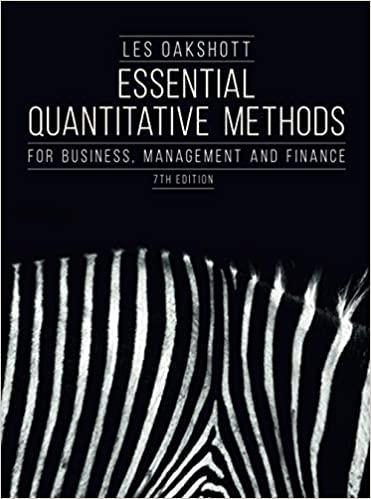Question
Project Management Case Studies. 5th Edition Harold Kerzner, P.H.D. Photolite Corporation (A) Photolite Corporation is engaged in the sale and manufacture of cameras and photographic
Project Management Case Studies.
5th Edition
Harold Kerzner, P.H.D.
Photolite Corporation (A)
Photolite Corporation is engaged in the sale and manufacture of cameras and photographic accessories. The company was founded in Baltimore in 1980 by John Benet. After a few rough years, the company began to flourish, with the majority of its sales coming from the military. By 1985, sales had risen to $5 million. By 2015, sales had increased to almost $ 160 million. However, in 1996, com[1]petition from larger manufacturers and from some Japanese and German imports made itself felt on Photolite's sales.
The company did what it could to improve its product line, but due to lack of funds, it could not meet the competition head on. The company was slowly losing its market share and was approached by several larger manufacturers as to the possibility of a merger or acquisition. Each offer was turned down. During this time period, several meetings took place with department heads and product managers regarding the financial health of Photolite. At one of the more recent meetings, John Benet expressed his feelings in this manner:
I have been offered some very attractive buyouts, but frankly the companies that want to acquire us are just after our patents and processes. We have a good business, even though we are experiencing some tough times. I want our new camera lens project intensified. The new lens is just about complete, and I want it in full-scale production as soon as possible! Harry Munson will be in charge of this project as of today, and I expect everyone's full cooperation. This may be our last chance for survival.With that, the meeting was adjourned.
PROJECT INFORMATION
The new lens project was an innovation that was sure to succeed if followed through properly. The innovation was a lens that could be used in connection with sophisticated camera equipment. It was more intense than the wide-angle lens and had no distortion. The lens was to be manufactured in three different sizes, enabling the lens to be used with the top-selling cameras already on the market. The lens would be operable not only with the camera equipment manufactured by Photolite but also with that of their competitors. Management was certain that if the manufactured lens proved to be as precise as the prototypes, the Central Intelligence Agency and possibly government satellite manufacturers would be their largest potential customers.
THE PROJECT OFFICE
Harry Munson was a young project manager, 29 years of age, who had both sales and engineering experience, in addition to an MBA degree. He had handled relatively small projects in the past and realized that this was the most critical project, not only to his career but also for the company's future. Project management was still relatively new at Photolite, having been initiated only 15 months earlier. Some of the older department heads were very much against letting go of their subordinates for any length of time, even though it was only a sharing arrangement. This was especially true of Herb Wallace, head of the manufacturing division. He felt his division would suffer in the long run if any of his people were to spend much time on projects and reporting to another manager or project leader. Harry Munson went directly to the personnel office to review the personnel files of available people from the manufacturing division. There were nine folders available for review. Harry had expected to see at least 20 folders but decided to make the best of the situation. Harry was afraid that it was Herb Wallace's influ[1]ence that had reduced the number of files down to nine. Harry had several decisions to make before looking at the folders. He felt that it was important to have a manufacturing project engineer assigned full time to the project rather than having to negotiate for part-time specialists who would have to be shared with other projects. The ideal manufacturing project engineer would have to coordinate activity in production scheduling, quality control, manufacturing engineering, procurement, and inventory control. Because project management had only recently been adopted, there were no individuals qualified for this position. This project would have to become the training ground for development of a manufacturing project engineer.
Due to the critical nature of the project, Harry realized that he must have the most competent people on his team. He could always obtain specialists on a part-time basis, but his choice for the project engineering slot would have to be not only the best person available but someone who would be willing to give as much extra time as the project demanded for at least the next 18 months. After all, the project engineer would also be the assistant project manager since only the project manager and project engineer would be working full time on the project. Now Harry was faced with the problem of trying to select the individual who would be best qualified for this slot. He decided to interview each of the potential candidates, in addition to analyzing their personnel files.
QUESTIONS
1. What would be the ideal qualifications for the project engineering slot?
2. What information should Harry look for in the personnel files?
3. Harry decided to interview potential candidates after reviewing the files. This is usually a good idea, because the files may not address all his concerns. What questions should Harry ask during the interviews? Why is he interviewing candidates? What critical information may not appear in the personnel files?
Step by Step Solution
There are 3 Steps involved in it
Step: 1

Get Instant Access to Expert-Tailored Solutions
See step-by-step solutions with expert insights and AI powered tools for academic success
Step: 2

Step: 3

Ace Your Homework with AI
Get the answers you need in no time with our AI-driven, step-by-step assistance
Get Started


